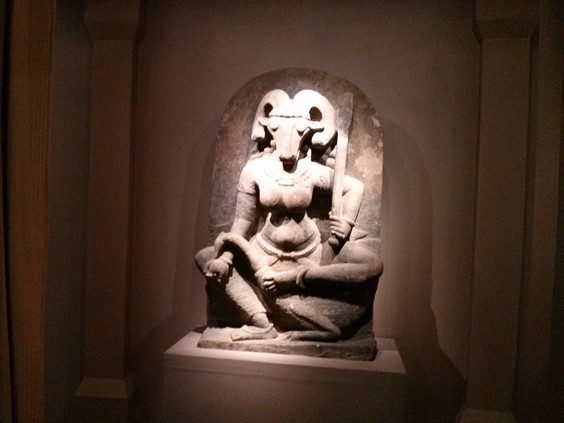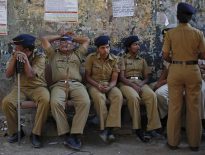India plans to step up its efforts to bring back Indian artefacts from other countries after the recent repatriation of a 10th century “Yogini” stone sculpture from Paris.

Illegal trade in paintings, sculptures and other artefacts is one of the world’s most profitable criminal enterprises, estimated at $6 billion a year, according to Global Financial Integrity, a Washington-based advocacy group. India is one of the biggest targets for smugglers, who ship stolen antiques and other culturally important artefacts abroad to sell to art dealers and museums.
India Insight spoke to R.S. Fonia, Director (Antiquity) at the Archaeological Survey of India (ASI), about the black market for Indian artefacts and what the ASI is doing to bring Indian antiques back home. This interview has been lightly edited.
Are you seeing an increase or decrease in smuggling of Indian artefacts?
Awareness has increased about the antiquities, so it has decreased. Certainly there is decline of smuggling.
How big is the market for smuggled Indian artefacts?
We don’t have figures.
What initiatives are you taking to bring back Indian artefacts from abroad?
We are trying hard. That’s why we have retrieved 16-17 artefacts from abroad. We are directly interacting with all concerned agencies, but it takes some time. There are so many processes involved.
Which countries are you negotiating with for return of Indian artefacts?
Negotiation is with all countries, but maximum is from UK, U.S., and Germany.
Can you name a few artefacts you are trying to bring back from overseas?
Atru in Rajasthan and Nagda in Madhya Pradesh.
[EDITOR’S NOTE: The sculptures from Atru consist of two Mithuna figures from Gadgach temple. One, measuring 68×58 centimetres, was stolen in April 2009 and the other, measuring 90×56 centimetres, in Sept 2009. They are presently with U.S. authorities and ASI officials say they are not aware of their estimated worth.
The sculptures from Nagda are three female figures of Surasundari. Two, measuring 99×38 centimetres, were stolen from a temple in January 1999 while the third, measuring 135×35 centimetres, was stolen the following year. They are presently with Belgian authorities in Brussels.]
What are the initiatives being undertaken to stop the smuggling of artefacts?
The government of India has decided to make certain amendments (to The Antiquities and Art Treasures Act, 1972). The objective is to make the Act more practical, implementable, and constitutional and also to promote art market in India like handicraft.
We are also trying to make registration process (of antiques) very simple. We will try to make (the Act) in all languages. There should be some online system for the receipt of applications.
The government of India has also set up national mission on monuments and antiquities. The mandate is to make a national register on monuments and antiquities (that are) totally unprotected. The government of India has launched another scheme — the national manuscript mission that is for documentary heritage.
You talked about promoting the art market. How do you do that?
Generate more awareness among the people about importance of heritage. We are also thinking to make some provisions from Southeast Asia, Southwest Asia, whatever Asia … if you want to bring some antique back of Indian origin, we will try to make some sort of incentives and some sort of custom exemptions. All sorts of things so that it can come back.
Which parts of India are vulnerable to smugglers?
Rajasthan and Madhya Pradesh, because there are many monuments in remote areas, and the temples in the south.
How are smugglers able to get antiques out of the country given strict laws?
Ask this question of customs … that is beyond our reach.
Considering the risk to artefacts in remote areas, is it better to take them and keep them somewhere safe like museums, or is it best to leave them where they are?
It is better to keep them in museums. Once you promote the art market in India, domestic market, ultimately you will find a number of buyers here only who can keep the antiquities in a proper place.
How do you educate the public?
By way of workshops, by way of training manuals. We have done so many things, exhibitions. Through posters, through video clips …
Are there no imaginative ways/specific initiatives to stop traffickers?
We have already taken all the initiatives. It is going on from the higher level and there is strict vigilance. But sometimes what happens is that there are so many constraints, you can understand. Whether it is political, climatic, or whatever is that …





